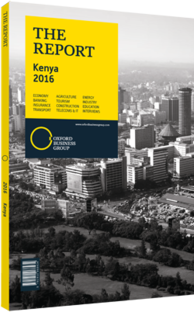Kenyan government reaches out to private sector to meet expanding educational needs
The government’s push for greater educational access is creating a variety of issues surrounding funding and quality throughout the public education system. This has led to greater demand for private education. Given this situation, as well as the massive reform effort and shake up of the existing system, there are likely to be plenty of opportunities for private investors to enter the education market.
New Institutions
The current youth population burden is creating demand for services across Kenya and outside the main urban centres. “Universities are opening in counties that never had them before. We want opportunities closer to the people that need them and the private sector can provide this,” Darius Ogutu, senior deputy director of education at the Ministry of Education, Science and Technology, told OBG. Given the current demographic trends in the country, there will be potential investment opportunities for some time. “The private sector is expected to complement what the public sector can do, especially in terms of basic education and training,” Ogutu told OBG. However, the best opportunities may arise in the tertiary sector. “The greatest opportunity for the private sector is to offer post-secondary training. There is currently a bubble going through the secondary system, and there will be a great number of students coming out of this system,” Ogutu added.
Although the licensing and establishment of private tertiary institutions is a laborious process, the potential rewards are substantial. For private universities, undergraduate students provide the largest revenue stream, accounting for as much as 80% of the student body. Many students pay for education out of pocket, while there is also strong demand for local loan boards to fund university education. The average degree cost is around KSh400,000 ($4400).
PPP Opportunities
However, it is not only in educational provision that there are opportunities. The government is keen to develop the public-private partnership (PPP) model to fund ancillary services for public education facilities. This will be largely focused on the delivery of facilities and infrastructure. The government has an infrastructure-funding gap of $2.1bn per year, according to the Treasury. As such, in March 2015, the Ministry of Education, Science and Technology announced that it plans to appoint an adviser to negotiate PPPs for state universities.
“The adviser will facilitate the construction of infrastructure projects within universities to enable them to improve on service delivery,” chief economist at the ministry, Isaac Kamande, told the local press.
By June 2015, the government had designated 70 infrastructure projects to be carried out as PPPs. The first of those was signed in the same month. Kenyatta University inked a KSh5.1bn ($56.1m) contract with the Africa Integras consortium for the construction and operation of a 10,000-person capacity university hostel. The consortium, consisting of Kenyan firms, Triad Architects, Broll Kenya Facility Managers, EPCO contractors, as well as the New York-based Africa Integras, will operate the facility for 20 years.
The development will provide much-needed housing for students at Kenyatta University. The institution has a student body of 50,000, but it currently only has an accommodation capacity of 10,000 students spread across 21 hostels. With the student population expected to increase to 70,000 in the next two years, the new accommodation is essential.
The successful tender for Kenyatta University is likely to be the first of many. There are 350,000 students in public tertiary education within the country, but state universities face an acute shortage of accommodation. With a funding shortfall, the government has now turned to the private sector. “To address this deficit we can increase taxes, but we have identified that a combination of PPPs can ease the gap,” Kamau Thugge, principal secretary at the National Treasury, told the local press in March 2015.
You have reached the limit of premium articles you can view for free.
Choose from the options below to purchase print or digital editions of our Reports. You can also purchase a website subscription giving you unlimited access to all of our Reports online for 12 months.
If you have already purchased this Report or have a website subscription, please login to continue.

